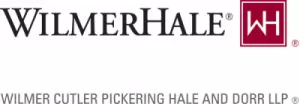As the nationwide ski season comes to a close, Massachusetts Governor Maura Healey has targeted ski area signage rules as part of a broader effort to eliminate outdated business regulations. Without compromising safety, the regulatory changes decrease red tape for Bay State ski resorts regarding the precise types of signs that must be displayed to warn skiers of terrain difficulty and potential hazards.
These deregulatory efforts demonstrate that ski resort safety is frequently a matter of state rather than federal law, and in the absence of a federal system, states across the country have taken widely varying approaches to how they regulate ski signage and safety. Governor Healey's efforts also signal the possibility that other states will ease signage requirements to help resorts mitigate costs and compete with out-of-state resorts.
Below is a brief summary and comparison of how nine different states, from New England to the Rockies to the West Coast, approach signage requirements to help keep skiers and riders safe while they shred the pow.
Massachusetts
Although targeted for reform by Governor Maura Healey, ski signage in Massachusetts has traditionally been governed by a complex set of state regulations. See 526 MA Code of Regs 526.10; Chris Van Buskirk, Governor Maura Healey Targets Ski Area Signage Rules in Business Regulation Cutting Spree, Boston Herald (May 29, 2025). These regulations codified specific signage for alpine and Nordic skiing, including signage requirements for difficulty, caution, trail closures, and hydrant markings. 526 MA Code of Regs 526.10. To reduce business regulation and expenses, however, Governor Healey has announced plans to cut ski signage regulations as part of a larger deregulatory initiative. Van Buskirk, Boston Herald. This will help bring Massachusetts ski area signage requirements in line with national standards. Id.
New Hampshire
In New Hampshire, ski area operators must follow specific signage requirements for directional signs, trail markings, and warnings. NH § 225-A:23 (2023). As part of these requirements, trail markings must clearly indicate the difficulty of each trail, using symbols like green circles, blue squares, black diamonds, and double black diamonds, and warnings for designated terrain. NH Rev Stat § 225-A:23 (2023). Not only must the trails themselves be appropriately labeled, but each resort must provide signs at the bottom of a lift or gondola notifying the skier of the difficulty of the terrain the lift services. Id. The state also mandates signs regarding trail maps, Nordic ski jumps, and freestyle terrain. NH Rev Stat § 225-A:23 (2023).
Maine
In Maine, ski area operators have a legal duty to post and maintain clear and effective signage to ensure skier safety and awareness of the inherent risks of skiing. 32 ME Rev Stat § 15217 (2022). Skiers must not ski on or otherwise use slopes or trails that have been designated as closed by the ski area operator. 32 ME Rev Stat § 15218. Additionally, Maine law prohibits skiers and tramway passengers from removing, altering, defacing, or destroying signs or notices placed in a ski area or on the trail by the ski area operator. 32 ME Rev Stat § 15218. The placement of signs can also be impacted by Maine's Site Location of Development Law, which governs large-scale developments. While this law does not directly regulate signage, it may influence where and how signs are placed if they are part of a larger development or expansion project.
Vermont
In Vermont, there is no specific law dedicated to ski signs. Skiers are required to know and adhere to Vermont's Skier's Responsibility Code. Mountain and Ski Safety: It's a Partnership, Ski Vermont. This code stipulates that skiers must stay on marked trails and obey all signs and warnings. Id.; 12 V.S.A. § 1038. Ski operators are not responsible for skiers' accessing terrain outside open and designated trail areas. 12 V.S.A. § 1038. Skiers who use ski area facilities to access these areas are liable in a civil action brought by any person to recover expenses incurred to provide rescue, medical, and other services. 12 V.S.A. § 1038(c). In short, while ski areas frequently post signs and provide warnings, Vermont puts the responsibility of safety squarely on the skier. However, local governments may impose additional safety signage or operational requirements on any given resort.
Colorado
Ski signage in Colorado is regulated by the Colorado Ski Safety Act. This act requires ski area operators to maintain a comprehensive sign system to ensure the safety of visitors. Signs must be prominently placed on passenger "tramways," which are defined as devices used to transport passengers uphill, like chairlifts, surface lifts, and rope tows. Signs also need to be readable to skiers and snowboarders under ordinary visibility conditions. The required signs include, but are not limited to, signs inside tramways showing capacity and emergency procedures, and various signs indicating unloading points, safety gates, and reminders to check for loose clothing and equipment. See CO Rev Stat § 33-44-106 (2021). Additionally, revised Section 33-44-107 of the Colorado Ski Safety Act requires ski areas to have signs depicting trail difficulty levels (e.g., black diamond), closed trails, and boundary markers. See CO Rev Stat § 33-44-107 (2021).
In recent years, there have been legislative efforts to require ski resorts to draft mandatory safety plans. If passed, those laws could lead to new ski signage requirements in an effort to improve mountain safety.
Montana
Montana Annotated Code § 23-2-733 enumerates eight defined duties for ski area operators to keep skiers safe and informed. Operators need to mark trail grooming vehicles with flashing lights when they're working or moving and put up visible signs for hydrants used in snowmaking. They also must maintain trail boards showing maps, boundaries, and difficulty levels of slopes, and update which slopes are open or closed throughout the day. Additionally, the code requires that the mountain display the most recent skier responsibility code published by the National Ski Areas Association (NSAA) and the Montana "Duties of Skier" listed in 23-2-736. Finally, designated freestyle terrain must be marked with a symbol recognized by the NSAA. See MT Ann. Code § 23-2-733 (2023).
California
California does not have a comprehensive ski safety act. While California also has no proactive government oversight, and thus no established signage policy, ski resorts generally provide signs in accordance with the NSAA and the American National Standards Institute guidelines.
Utah
In Utah, ski mountain signage is governed by the Utah Ski Safety Act, which sets out basic rules for ski operators. While the act doesn't detail much of the signage, it does have one important requirement: Section 78B-4-404 of the Utah Code requires ski area operators to post trail boards at prominent locations within the ski area. These boards must list the inherent risks of skiing and the limitations on liability for ski area operators. See UT Code § 78B-4-404 (2020).
Idaho
Idaho's ski signage requirements are set forth in Idaho Code § 6-1103, which details "duties of ski area operators with respect to ski areas." The duties related to signage include maintaining standard markings for trail maintenance vehicles, hydrants, and other snowmaking equipment. Ski resorts in Idaho also must use signs to mark the top entrance and difficulty level for each trail and update them daily with any closures. Section 6-1103 also requires resorts to provide notice of snowmaking and to feature trail boards that contain maps and trail difficulty ratings at prominent locations in the ski area. Finally, unlike many other states, Idaho requires a sign at the bottom of the mountain that advises passengers to seek advice if they are not familiar with the chairlift. See ID Code § 6-1103 (2023).
Comparison Between States
From coast to coast (and from fluffy powder to sheer ice), states vary greatly in their requirements governing ski signage. New Hampshire, Colorado, and Montana tend to be more burdensome in what they require of ski resorts, while Maine, Vermont, Utah, and California are more permissive. Ski signage in Massachusetts had been heavily regulated, but Governor Healey has shredded the red tape. Notably, the more permissive states tend to focus more on the "inherent risks" to the skier, and so the liability primarily rests with the person undertaking the activity. California is especially notable for its lack of an affirmative statute governing ski resort liability, instead relying on common-law negligence. On the other hand, states with more burdensome signage requirements tend to focus on maximizing safety through signs marking trails, hydrants, and terrain features; signs indicating trail difficulty; signs reminding passengers of best practices when using chairlifts; and other various cautions.
Governor Healey's recent efforts to reform Massachusetts ski signage laws represent a new deregulatory action that could inspire other states to take similar measures. Accordingly, ski resort operators should pay close attention to this evolving regulatory landscape.
The content of this article is intended to provide a general guide to the subject matter. Specialist advice should be sought about your specific circumstances.



